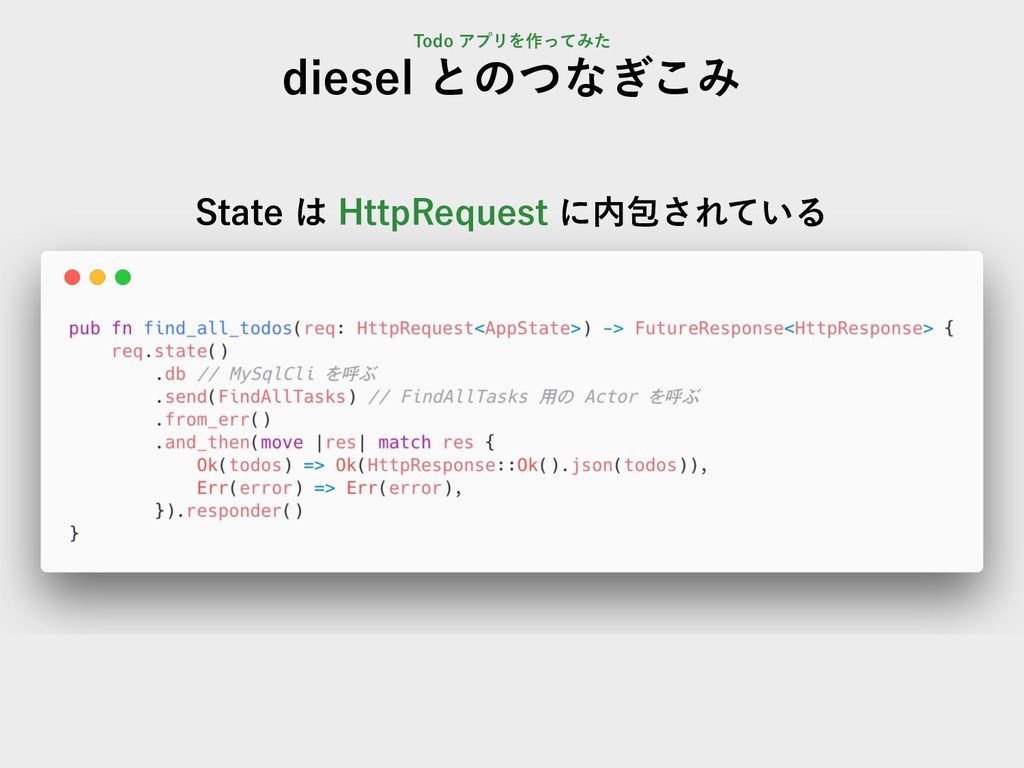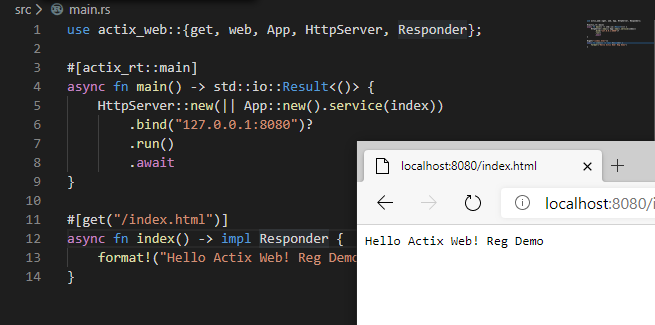

In MySQL, for instance, LastInsertId() will be available on inserts with an auto-increment key, but in PostgreSQL, this information can only be retrieved from a normal row cursor by using the RETURNING clause.
Actix rt github driver#
The result has two possible pieces of data: LastInsertId() or RowsAffected(), the availability of which is driver dependent. or, you can use MustExec, which panics on errorĬityState := `INSERT INTO place (country, telcode) VALUES (?, ?)`Ĭountr圜ity := `INSERT INTO place (country, city, telcode) VALUES (?, ?, ?)`ĭb.MustExec(countr圜ity, "South Africa", "Johannesburg", 27) The connection is returned to the pool before the result is returned.
Actix rt github drivers#
For drivers that do not support ad-hoc query execution, a prepared statement may be created behind the scenes to be executed. Exec ¶Įxec and MustExec get a connection from the connection pool and executes the provided query on the server. Let's go from the unchanged interface through the new semantics, explaining their use.

Queryx(.) (*sqlx.Rows, error) - Query, but return an sqlx.Rows.MustExec() sql.Result - Exec, but panic on error.QueryRow(.) *sql.Row - unchanged from database/sql.Query(.) (*sql.Rows, error) - unchanged from database/sql.Exec(.) (sql.Result, error) - unchanged from database/sql.The handle types in sqlx implement the same basic verbs for querying your database: open and connect at the same time, panicing on errorĭb = sqlx.MustConnect("sqlite3", ":memory:")

The MustConnect variant will panic when encountering an error, suitable for use at the module level of your package.ĭb, err = sqlx.Connect("sqlite3", ":memory:") You can do this in one go with Connect, which Opens a new DB and attempts a Ping. In some situations, you might want to open a DB and connect at the same time for instance, in order to catch configuration issues during your initialization phase. force a connection and test that it worked from a pre-existing sql.DB note the required driverNameĭb = sqlx.NewDb(sql.Open("sqlite3", ":memory:"), "sqlite3") You can create an sqlx.DB via Open or by creating a new sqlx DB handle from an existing sql.DB via NewDb: It maintains a connection pool internally, and will attempt to connect when a connection is first needed. This is why creating a DB does not return an error and will not panic. Connecting to Your Database ¶Ī DB instance is not a connection, but an abstraction representing a Database. Because the underlying implementation was inaccessible, sqlx.Row is a partial re-implementation of sql.Row that retains the standard interface.
Actix rt github code#
Handle types all embed their database/sql equivalents, meaning that when you call sqlx.DB.Query, you are calling the same code as sql.DB.Query.
Actix rt github install#
You will want to install sqlx and a database driver. If you need help getting started with Go itself, I recommend these resources:īecause the database/sql interface is a subset of sqlx, all of the advice in these documents about database/sql usage also apply to usage of sqlx. There are other resources of excellent information about using SQL in Go: You should make sure to check all errors in an actual program. It will not cover setting up a Go development environment, basic Go information about syntax or semantics, or SQL itself.įinally, the standard err variable will be used to indicate that errors are being returned, but for brevity they will be ignored. Sqlx is a package for Go which provides a set of extensions on top of the excellent built-in database/sql package.Įxamining Go idioms is the focus of this document, so there is no presumption being made that any SQL herein is actually a recommended way to use a database.


 0 kommentar(er)
0 kommentar(er)
